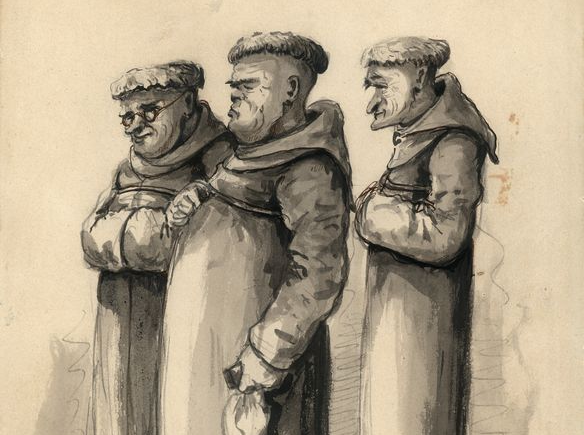Monks’ Diet
Monasteries throughout Europe engaged in more than traditional soul shepherding. Famous beer and wine originated in monasteries and have survived to the present day. What about monasteries and vineyards in Vilnius? Although there were no vineyards in the city, the daily diet of monks included wine. Pursuant to the order of Bishop Jurgis Radvila, dated to the late 16th century, in convents it was usual to serve 1 kg of bread, ½ litre of wine diluted in water (though not during fasting periods), 5 eggs per day and almost 1 kg of meat. By the way, beer and cider were not considered alcoholic beverages. It was thought that they were better for your health than water. For this reason, they were consumed alongside meals. Meanwhile, brandy and alcohol infusions served a medicinal function.
In cottage gardens, monks would grow vegetables and herbs for spices, and used them to season their meal. In convents, three dishes were usually served for lunch, and two for dinner. Consequently, there was a lot of cooking. Although it is usual today that moderation is practiced in monasteries, in the 16th century, this was not always the case. Some documents have survived stating that senior Bernardine Nuns in Vilnius would take some food from the common storage facilities and keep it in their cells separately for themselves and cook it individually, so modesty was not typical in this regard. In some later complaints, you can see that Bernardine Monks reduced the daily portion for convents, while themselves enjoying coffee and Hungarian wine.

